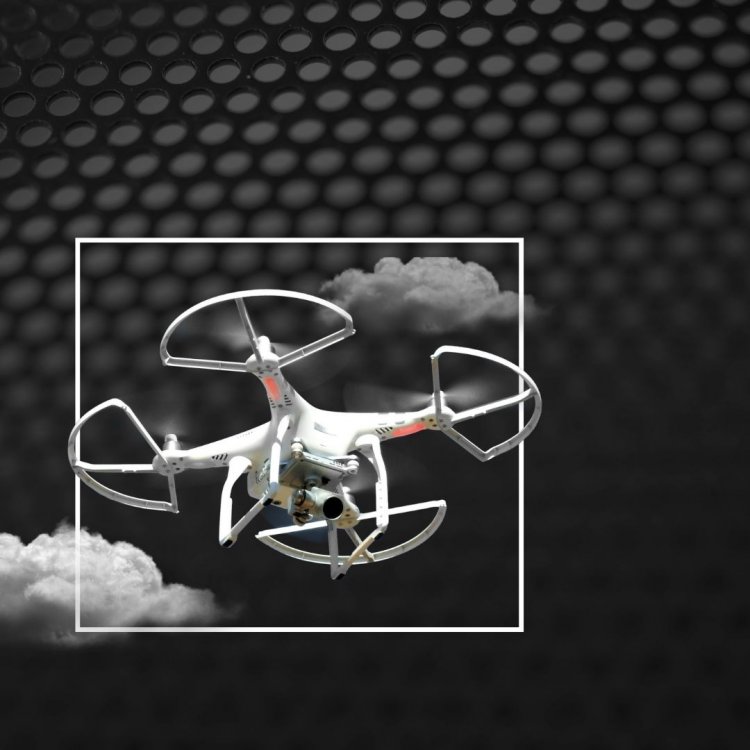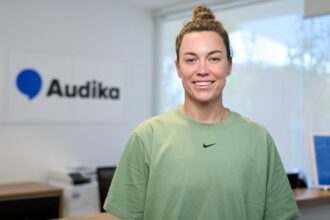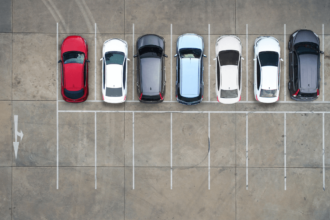When you look up in the sky, you will see stars at night and probably a few aeroplanes or helicopters flying at a fixed height. This limited use of airspace has been a quest for big tech giants and billionaires to conquer. From the likes of Google and Amazon to Uber, every company wants to own a space in the air and some want to do that through drones.
Amazon wants to use airspace to deliver products faster, Google wants to do the same for local shops, while Uber wants to use the air to propel people from point A to point B. However, there are also startups and companies that want to use drones and the airspace for critical use cases like disaster management or urgent delivery of life-saving medical products.
One such startup is Amsterdam-based Avy, which is reimagining the use of drone service for emergency services. “I have always been very fascinated about everything that flies,” says Patrique Pi Zaman, Founder and CEO of Avy.
Aviation needs to be innovative and not conservative
For Patrique Pi Zaman, the idea of starting a drone service company stems from a childhood fascination for anything and everything that flies. He narrates his childhood story where he used to look up to the sky and see not only aeroplanes flying but also the potential. That passion for aviation was never lost on him but with the passage of time, Zaman further understood the intricacies associated with the aviation industry.
In its current form, he says, the aviation industry is “quite conservative” when it should actually be innovative. This desire to turn an old school industry into a bedrock of innovation is essentially the motivation that drove Patrique to start Avy.
The backstory behind the decision to start Avy is as fascinating as his childhood story of looking up at the sky. Patrique says he was once going through an old magazine at his parents’ house that he used to read as a little kid. In a section dedicated to future technologies, Patrique says the magazine — published in 2020 — predicted what 2020 would look like and when asked how many of those predictions came true, he smiles and says, “most of their predictions came out well in one way or the other.”
However, the magazine did not really succeed in getting everything correct in its technology of the future issue. A page dedicated to flying cars becoming a reality in 2020 did not materialise despite flying cars being a thing in science fiction movies and that flying DeLorean from the Back to the Future franchise remains iconic to this day.
This page about flying cars in an old magazine piqued the interest of Patrique, who immediately set out to investigate the technology. He says the findings led him to this conclusion that “there is little innovation happening in aviation, where at the same time, there is a huge need to innovate because everyone knows that flying is far from sustainable.”
Making aviation sustainable is a challenge
The amount of research that Patrique has done about the aviation industry and its inability to become innovative or sustainable shows every time when he speaks about the industry. A lot of the time he follows his statements with definitive numbers, proving how invested he is in the space and that alone could be the factor for his success and that of Avy.
He says it costs 12 per cent of emissions in mobility by just flying and it is such an unsustainable mode of transport that even just showering for just 20 seconds a day, never eating meat again or cycling to work won’t undo that action. When asked what could be done to make the aviation industry more sustainable, Patrique answers as if he was anticipating that question.
He says, for the aviation industry to become sustainable, it also needs to become autonomous. With all the information at his disposal, Patrique set on this mission to imagine what aviation would look like if it was sustainable and autonomous. He also began imagining a new sky world with a friend and an aviation student. Their brainstorming focused on changing the three fundamental pillars of the aviation industry.
He says the first of those pillars is the vehicle. With drones, helicopters, and aeroplanes, Patrique says there should just be one form of flying vehicle to reach full sustainability. This could lead to the possibility of zero-emission flights, whether fully electric or hydrogen, but also help with the second pillar, sustainable production. The third is fully autonomous aviation, including options like different flight altitudes.
Breaking the entry barrier
Just a week before our chat with Patrique, the Hague-based Ampyx Power filed for bankruptcy after failing to find an investor. Ampyx Power aimed to generate wind energy using an airborne vehicle and feed the energy directly to the grid. The ambitious project failed after the company failed to find adequate funding to support its research and production.
Patrique also talks about the cost associated with building a startup in the aviation field. In order to conduct feasibility research on their idea, Patrique says they applied for a competition, where they won and got a little bit of money. However, to build his grand vision for a completely different aviation industry, Avy would have needed not only hundreds of millions of euros but also thousands of people. Even if that vision succeeds, it would have taken at least 20 years for that vision to get the necessary certifications.
Patrique Pi Zaman, who studied nature sciences and innovation management at Utrecht University, describes himself as impatient by nature. The lack of money and resources didn’t stop him either. He tells the story of an immigrant from Syria in Amsterdam who told him about his long journey from the war-torn country to the safety of the Dutch capital.
During the journey from the Mediterranean Sea to mainland Europe, the person told Patrique that their boat sank and he was one of only three survivors out of more than 40 people who sought refuge. This interaction, Patrique explains, made him rethink his idea for a future of aviation. He tailored his grand vision to build an aircraft that could fly to a disaster zone that most drones could not or where helicopters are not easily available.
The story of Patrique and Avy is one of the grand visions that took its roots when he was a child and looked up to the sky. However, it materialised when he heard this story of a disaster that could have been averted with proper access to disaster relief. Thus, Avy was born with the idea of an aerial vehicle to aid in emergency response.
Drones for good
The tagline of Avy is “drones for good” and it has built a drone that Patrique describes as “a wing-shaped aircraft ready to save lives.”
He says that Aera 3, the new generation aircraft designed by Avy is able to take off vertically, which eliminates the need for a runway or any other infrastructure. After the aircraft takes off vertically and reaches a certain altitude, it is able to transition to a horizontal flight and it flies by generating lift from its wings.
Patrique says Aera 3 is 10 times faster, can fly 10 times further and is 10 times more efficient than a regular drone. It is also fully autonomous, which removes the need for a pilot. The onboard electronics designed in-house by Avy are able to control the aircraft, manoeuvre, navigate and avoid collision with other airborne vehicles.
While the fully autonomous design might make some people worry, Patrique says it is the only logical way to deploy its technology faster and get to a disaster zone faster. Avy does not want to be in the business of only selling drones and is instead looking at building an entire ecosystem that the company likes to call “drone response network.”
The idea is to have multiple drones docked at various stations and the drones being intelligent enough to map their path and reach a disaster zone faster than existing technology. Another reason for its full autonomy is that manual labour adds to the cost. The third reason, Patrique says, is safety. He says 87 per cent of failures are human-induced and he feels a fully autonomous vehicle can reduce failure, and achieve its peak efficiency.
One of the unique aspects of Avy is that it designs, assembles and produces all its aircraft in-house. This allows, Patrique says, Avy to integrate the hardware and software better than most other drone companies.
Challenge of building everything from scratch
For its disaster management and emergency delivery drone network, Patrique estimates Avy will need to have anywhere between 50 and 75 drones in the Netherlands. He reiterates the need for the company to place these systems depending on “time that you require to get to an incident and the backup that you need.”
He also reveals that Avy has around three of its Aera 3 drones flying in the Netherlands. This being the starting phase, the startup is preparing itself for its biggest challenge yet. It is one thing to get a minimum viable product or study feasibility but it is another thing to get that product off the shelves. Patrique, who has dreamed of this since childhood, is cognizant of the challenge.
Patrique says the team at Avy is “putting a lot of effort to scale” production. It is looking to speed its European rollout not only in the Netherlands, but also in Scandinavia, the UK, Belgium, and France. He says that designing everything by itself has been the biggest challenge in this journey so far.
“Motors, autopilot controllers back then were more hobby material than for industry use.. There was no regulation in place. We couldn’t get people that were experienced since the ecosystem was new. So we had to do a lot of things, we had to discover a lot of new things,” he elaborates on the challenge.
It is very rare to see challenges become strategy and Avy has made it a mission to hire inexperienced people who have “an extreme form of self-learning and are able to understand complex things faster.” In fact, Patrique says that finding market fit should be on top of the agenda of every entrepreneur.
Raising Series A funding plan
We have seen hardware startups fail without adequate funding and Patrique agrees with that notion. He says a hardware startup can bootstrap only to a certain point. With the feasibility study done and its drones already being deployed in the Netherlands, Avy is looking to raise funding in the form of a Series A round.
The new funding will help Avy reach its goal of scaling production to one aircraft per day. The Series A funding will essentially support its investment in building a production line. “I would say there are one or two tickets open in Series A and we hope to close it soon,” Patrique says.
Techleap.nl Rise offers inspiration and motivation
Patrique says he decided to join Techleap.nl’s Rise programme because of the opportunity to connect with other founders, tech leaders, and pioneers in the industry. He says the role of an entrepreneur can at times be so closed that you are focussing only on your company and thus disconnected from the outside world.
By joining the Rise programme, Patrique says that he once again got the opportunity to find inspiration and motivation from other founders. He also adds that the programme helped him learn “how to grow from 50 to 100 to 150 people.”
Avy is at this juncture where it could see hypergrowth in terms of headcount and milestones achieved. However, with that hypergrowth, there will be a need to change as an organisation and Patrique believes he learnt through batch 7 of the Rise programme.
“You need to be really careful in your culture, you need to change your organisational design, you need to change your leadership team, you need to change a lot of things,” he says. “As we are all inexperienced with that part, it was great to get a lot of ideas.”
Another thing, Patrique says, the Rise programme helped him see is blind spots. He says the team at Avy is familiar with the things it does right but Rise helped him see things they are not doing right. This is key for a startup to keep doing what it does right and fix the blind spots that could unlock value within the organisation.
Patrique summarises his whole experience with Rise as an opportunity to reflect on the hardship of finding great talent. He says that Avy has an interesting culture and offers extreme freedom to those working at the organisation. “People can decide their own days of work, their own hours, we offer infinite holidays, we have a bar and a sauna, rooftop terraces, a lot of secondary things that we never promote because that’s just what we do,” he says.
He further adds that Rise helped him learn about employer branding, a manifesto detailing why Avy wants people to work for it and also help people understand its organisational framework. Patrique says Avy wants to be that company which is able to communicate its objectives clearly. He concludes by saying that the Rise programme helped him understand the right balance in communicating the objectives.
Big vision and bigger mission
Patrique Pi Zaman says the first goal of Avy is to build a global response network that allows every country to deploy aircraft within minutes to support people with lifesaving needs. The second goal is to become so experienced with sustainable, zero-emission and autonomous aviation, that they can build larger aircraft.
If Avy succeeds in this mission then it will have an outsized influence on the larger aviation industry forcing others to change and become sustainable in the process. He says all of this will become possible only if “Avy becomes a workplace that everyone is super proud to work for” and “everyone feels happy and healthy.”
“If we succeed in these three things, then I’m happy,” Patrique quips with a big smile.
As we conclude, Patrique shares important advice for every entrepreneur out there. He says “entrepreneurship is like evolution, as entrepreneurs, we need to be very aware of what’s happening and make sure that we act on it to see whether the idea fits or not.”


















